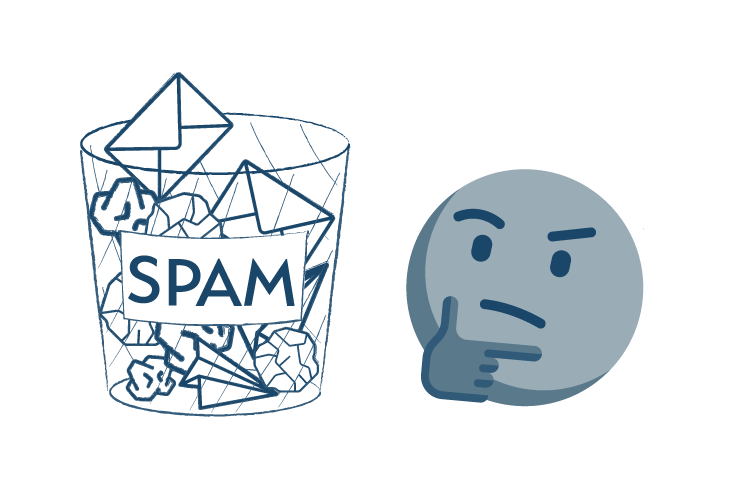
How to Write a Formal Email
Email communication is now a part of everyday work routines. Learn how to write a message to a client or business partner that not only gets opened and fully read but also prompts the response you need. Your email can stand out among others quite easily—just follow a few simple rules.

Personalize. It Greatly Enhances Communication
Before diving into the individual parts of an email, here’s a recommendation: if possible, tailor the message to the specific recipient. This can help you establish a connection quickly and effectively. Additionally, it will make your text more engaging and less like a formal notice. For example, if you know the person is an avid fisherman and mentioned during your last call that they were going fishing, ask them how their fishing trip went.
Start with the Subject: Capture Attention Right Away
One of the most important, yet paradoxically the shortest, parts of the email is the subject line. It should be crafted to immediately grab attention while accurately reflecting the content of the message. Be mindful of the length, which should be just right—ideally no more than 50 characters. For example, a subject might look like this: “Meeting Minutes from February 1st.”
The question remains whether to use emojis. While they can make the subject stand out, some email providers flag messages with emojis as spam. Therefore, use emojis with caution in this context.

The Right Greeting Breaks the Ice with the Client
A greeting in an email is like personal communication. You can offer a firm handshake, look the other person in the eye, and greet them confidently. Or, conversely, you can offer a limp handshake, mumble something under your breath, and look at the ground.
Start with a polite greeting. When appropriate, don’t hesitate to use the recipient’s title, if they have one. For example, when communicating with a lawyer, addressing them by their title can be a good move. If necessary, introduce yourself and refer to previous communication to remind the recipient of the context: “Good day, Martin, I’m writing to you from the agency Four Bros. I’m following up on our phone call from the 10th of this month, where we discussed…”
The Body of the Email is Key
Now you’re at the point where you convey your message. Always start with the most important information, leaving less critical details for the end. If the email needs to be shortened, cutting from the back is easier. Also, remember to break up the text into paragraphs, as this greatly improves readability.
If the situation calls for it, use bullet points, for example, when listing tasks that need to be done. If you want to emphasize a particularly important point, bold it. However, avoid using all caps, as this implies shouting. Just think of discussions on social media for a reminder.
Next Steps – Actions to Take
You’ve communicated everything necessary, and now you need something from the recipient? Be direct and don’t rely on them to pick up on it between the lines. If the email is addressed to multiple people with different tasks, assign them clearly to specific individuals. This way, everyone knows exactly what’s expected of them. If you don’t do this, you risk the task not being handled by anyone, resulting in responses like, “I thought the colleagues already sent it to you.”
So, how do you assign tasks? For example: “Ms. Dvořáková, please send the access credentials to the system. Mr. Novák, kindly send me the latest report table.”
Don’t Be Afraid to Set a Deadline, but Be Considerate
If you’re requesting something, specify a reasonable time frame for when the task should be completed or sent. However, unless absolutely necessary, avoid asking for something immediately. Exceptions include cases where you cannot proceed with your work without the requested information. If the recipient exceeds the stated deadline, don’t hesitate to politely follow up.
The End of an Email Can Seal the Deal—or Not
Just like with the greeting, your farewell should be polite. Wish the recipient a good day and thank them in advance if you’re asking them for something. Also, invite them to reach out if they have any questions. Avoid ending the message with just one or two words or, worse, with no closing at all.
You can end your email nicely like this: “Thank you in advance for sending the information, and if you need anything, don’t hesitate to contact me. I’ll be happy to explain everything. Best regards and have a nice day, Jan Novák.”
Four Additional Tips
-
Write Clearly: If you don’t know the recipient very well, avoid technical terms at the beginning of your communication. There’s a risk they may not understand them, and you might intimidate them right from the start.
-
Don’t Be Afraid of Emojis: If the recipient uses emojis, don’t hesitate to include them in your replies as well. Not using them could come across as disrespectful. Just remember, moderation is key.
-
Mind Your Language and Spelling: Before hitting send, take a few minutes to check for spelling mistakes or errors. You don’t want your formal communication, representing both your company and yourself, to contain incorrect grammar or typos.
-
Don’t Let Emotions Take Over: If a situation begins to escalate or there’s a risk of it turning into an argument, instead of sending another email, call the recipient to resolve the issue. It’s usually faster, easier, and more effective.
